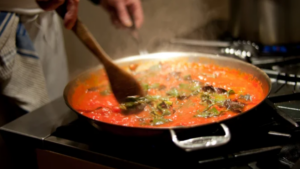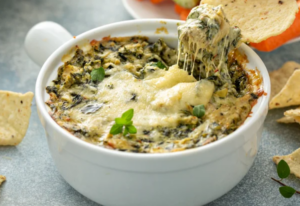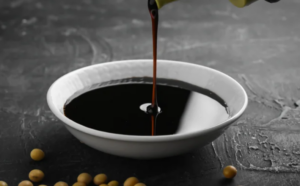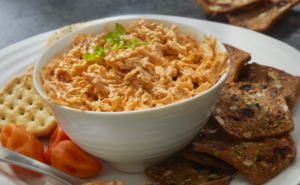Maybe you have a beautiful, organized fridge. Or maybe, just maybe, you have a fridge in case of a turbulent forest with leftovers, various drinks, and a door that looks like outdoor-style sauces. Not a bad thing here; rather something of it feels special when you have tasty, sharp, or sour flies that help improve your cuisine. But, on a closer look, dietary researchers probably notice that some of these bottles and jars have sauce written on them while some are called dips and some are called dips and sausages for both. And some are used in three different ways Like the marinade, too. So then, what is the difference between dip and sauce, if they have any difference.
It can be difficult to originate on the slightest difference between sauces and dips. Whether you are Astor-bought or homemade, when and where to use one compared to the other, this question is always on your mind. There is such a large joint between the sauce and the dips that it doesn’t come in too many times that some are simply called sauces or dips, but more so it is important how you want to use it. However, there are some helpful hints that you should make them specific in mind.
What is a sauce?

Before this subconfusion, we had good old sauce, which is the umbrella for all these condiments. Food historians have trouble figuring out what humans ‘ first sauce was because it was of course for cooking and burning foods, and humans had a desire to enhance the taste of a few prunes or to forever eclipse the taste of meat. In China, salted bean paste is also mentioned in the third century BC, and in the Roman Empire, people were called garums that were a delicious sauce of cassette fish and spices.
It is clear that the sauce should be somewhat confrontational – a strange fact is that the name comes from the Latin word “salty”. This feature, unlike dried, powdered spices, helps the sauce to wrap and preserve foods. It also mentions the meaning that a flavor can be used more effectively by adding water or other distilled substances to a flavor. Sauces come in a variety of varieties that are not possible to mention in detail. For example, in French culture itself there are five mother sausages and their large sex-producing varieties.
What is a dip?

Introducing a dip the meaning appears condensing as it takes on meaning based on the name. A dip is one thing in which you dip another food and increase its taste or give a dish a novelty. A dip makes the food feel delicious. As if a cracker is fine in the sole, except when it’s dipped into a strong pimento thing, isn’t it more interesting? Crunchies are crunchy, saturated and healthy, but when dipped in Benedictine or another creamy dip, such as ranch, it really comes to life.
The slightest understanding of a dip depends on the thickness. Dips are intended to fall off without clinging to food. Crackers and crudits are formed by transferring dips, which are usually alive and strong in taste. This is further confirmed when you buy a dip from the store. While the bottles usually contain sauce, it comes in dip tubs with a wide mouth so it can be easily used. At home, the dip is not placed in a long jar but is spread out into a bowl so that it can be drained more easily.
Sauces are generally more liquid and smooth

It is important that the relationship of the sauce and dip consists of occasions when you compare. In the same way, as mentioned earlier, the sauce is thin and smooth. They can be cold, hot or medium but in general, a sauce is made to put on food. For example, the magnificent hollandaise eggs lay on Benedict, sharp vinaigrette shaded on cold vegetable salads, and plain sauce Pomodoro glued to new paste. The sauces are dissolved in a dish made in a saucepan, be they modest or glorious of choice.
Moisture added to the sauce is added from different places. Of course, many commercial available sausages have water in the base, except most homemade sausages have a more flavorful raw base. Stock and broth are used to bring delicious notes from here to the basic sauce, while wine, cider, beer, and syrup are used to add sweetness, grass, beans, and tartaryfulness and complexity.
Dips are chunkier

Solid, creamy, and most of all, dips have a rich body – see more examples about our best dip recipes. Where the sauce covers other foods, the dip is noticeable, more or less. As Sousse, it can be difficult to identify, so when someone refers to a dip, what dip they mean synonymously with. The action of when eating here plays a huge role; are you drowning food in a substance? So it is possible that he is a dip.
Freshly cut vegetables, crackers, chips, and sliced bread are all beloved friends of dips. Whether a carrot is dipped in whipped hummus, topped with a tortilla chip hot buffalo chicken dip, or a modest crostini used to whip up an asciago and pickle dip, the dips are in importance. Thus, dips can contain any wine or chopped English, such as meat, cheese, and vegetables, more complete or chopped carrots to get space. Not to say that these may not exist in some sauces, but, in a more voluminous form, these are scented things to thaw that spoil the desired softness. With his strong temperament, dips These can be caught hot in objects without losing their main properties.

